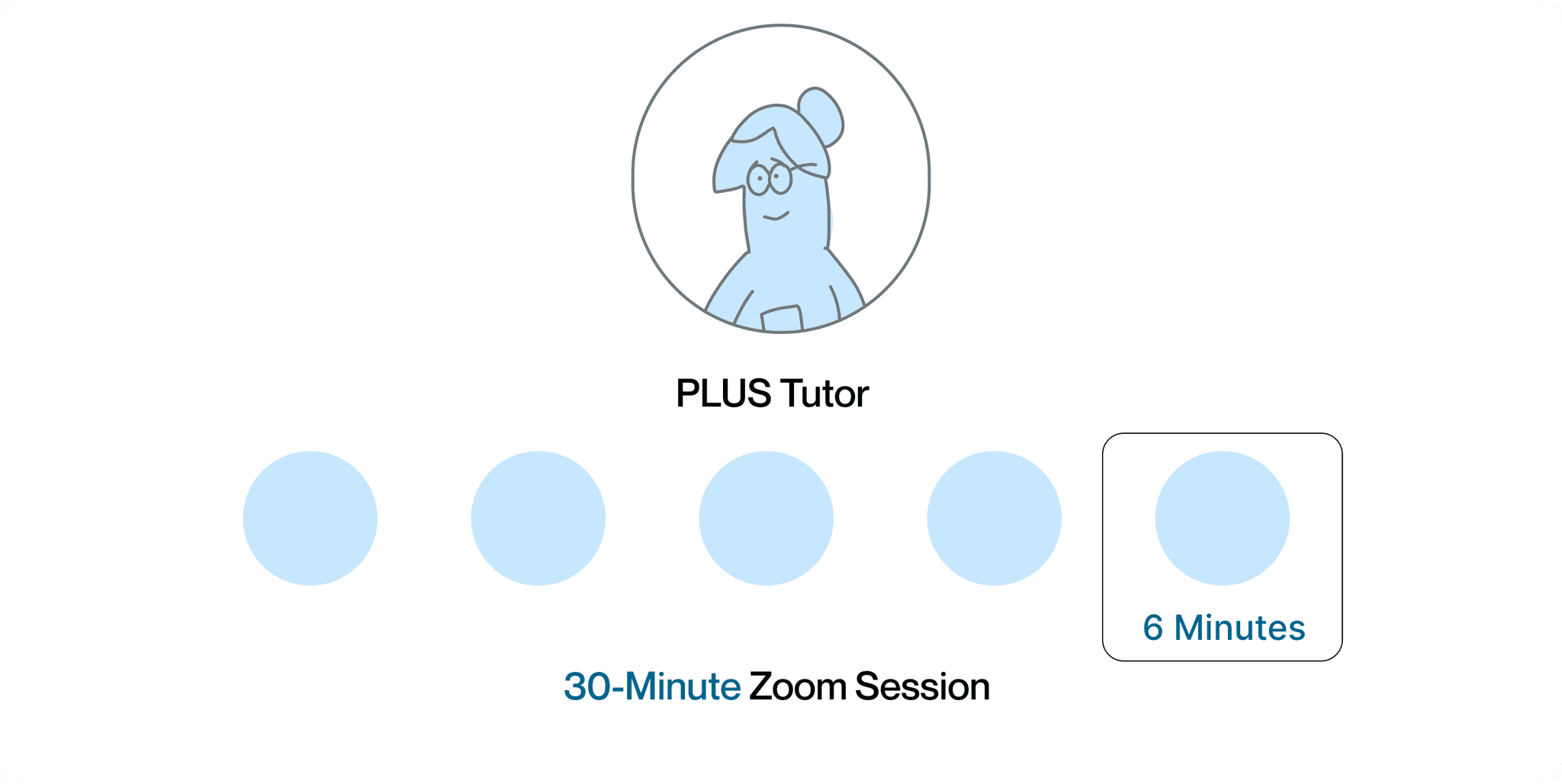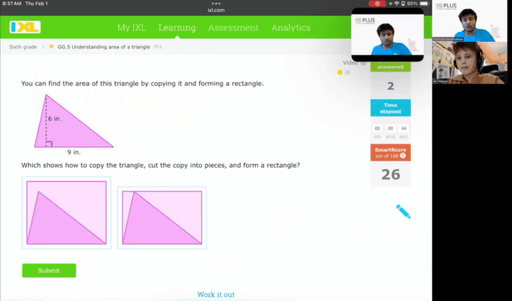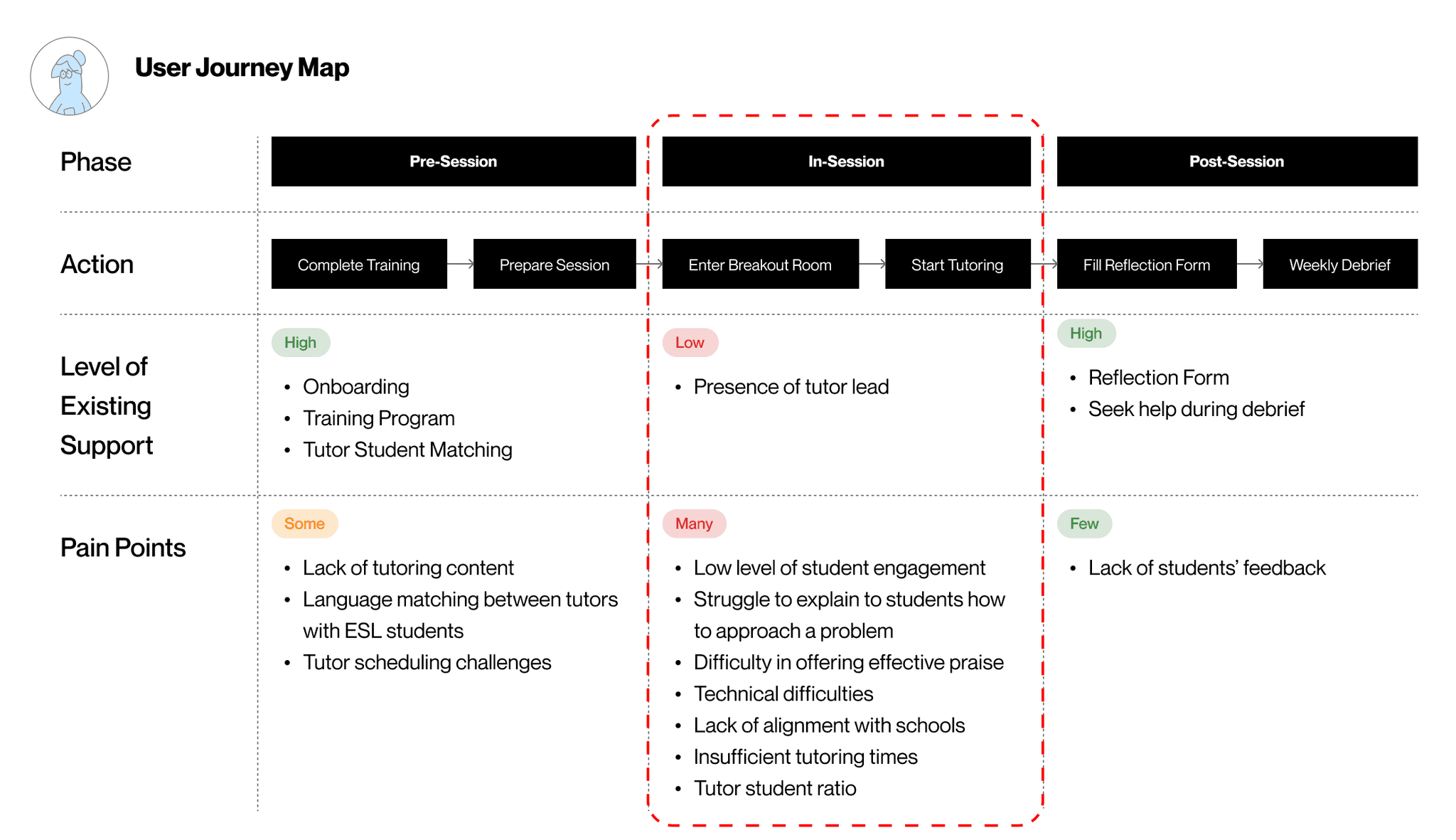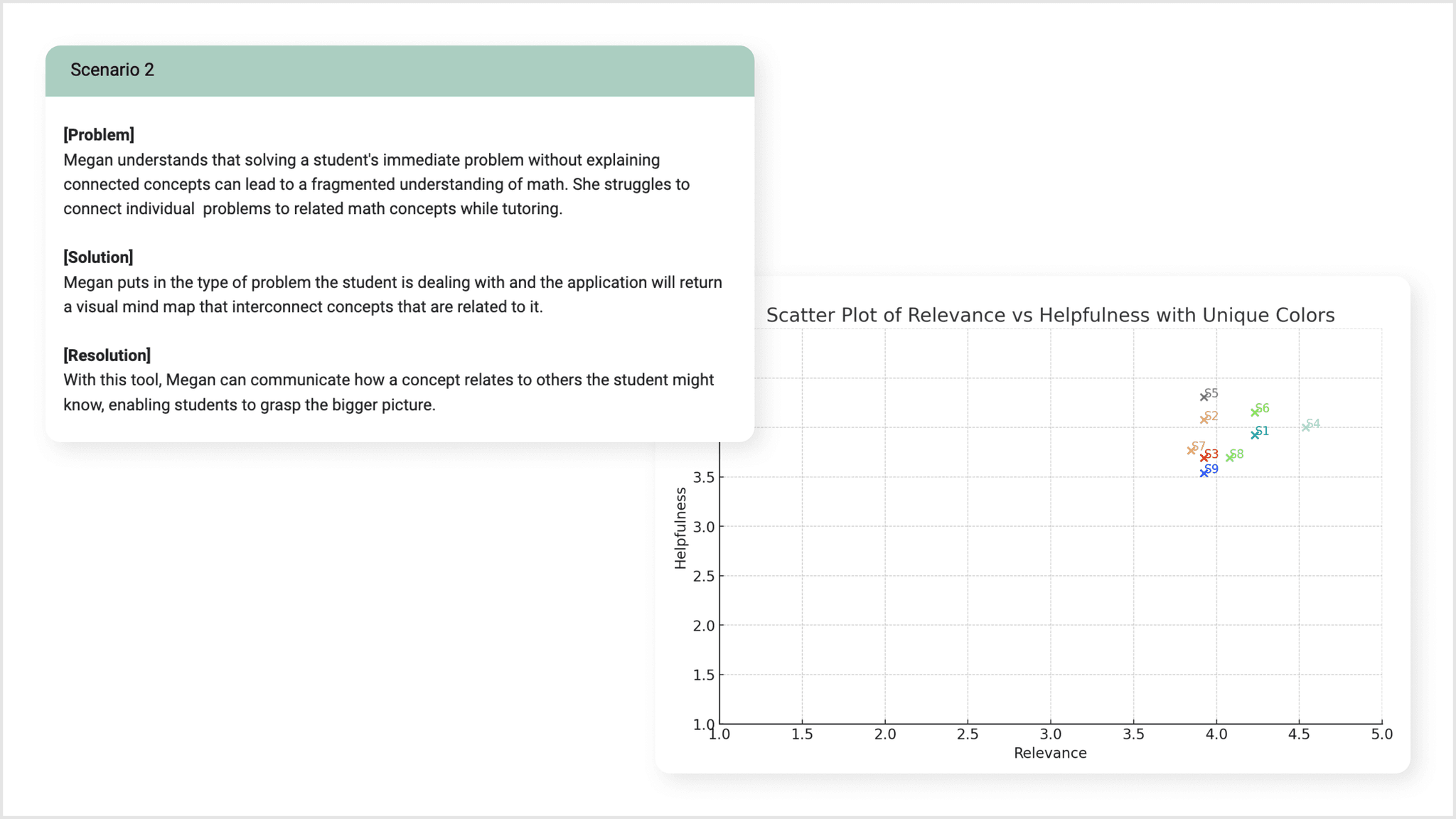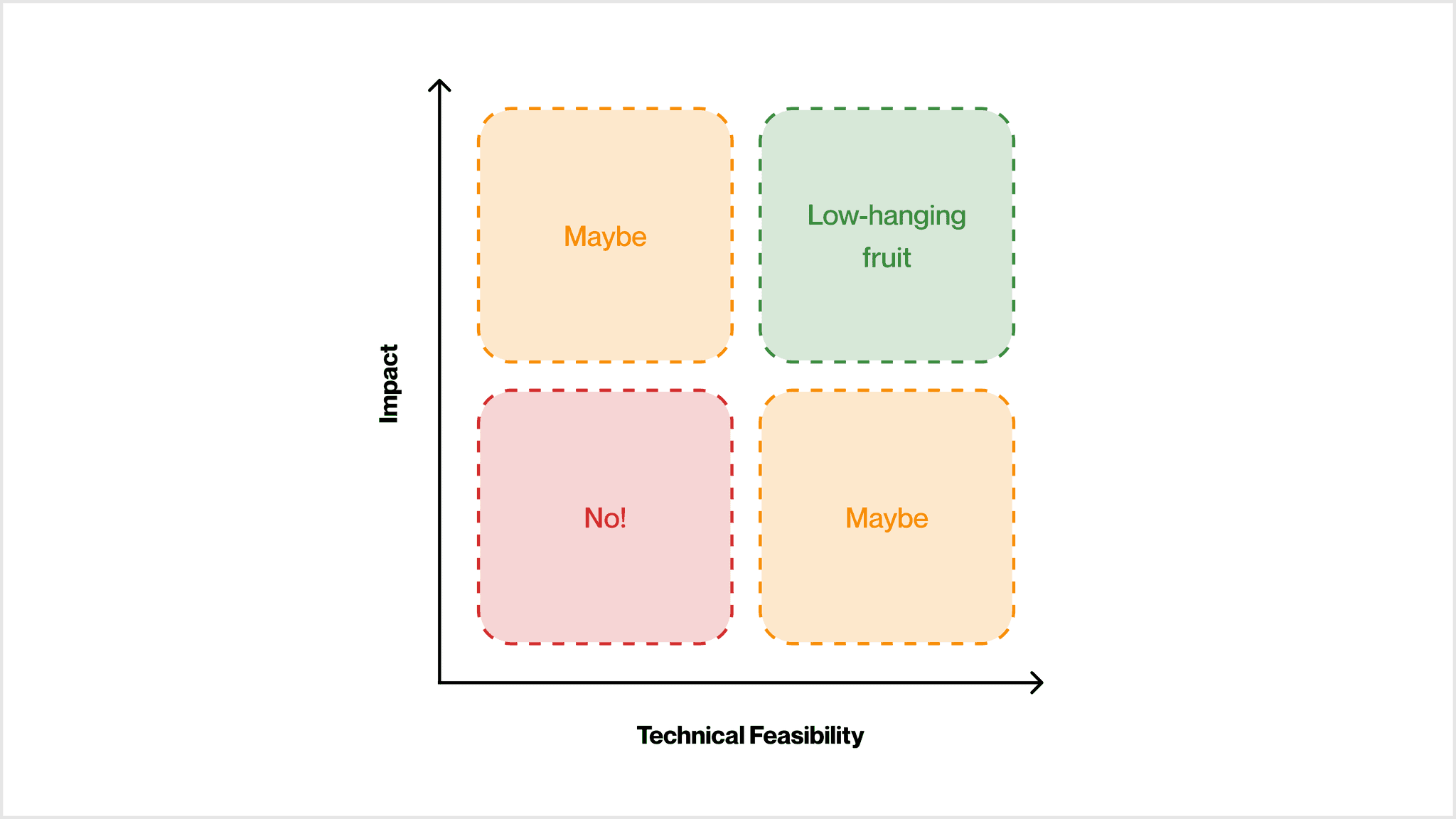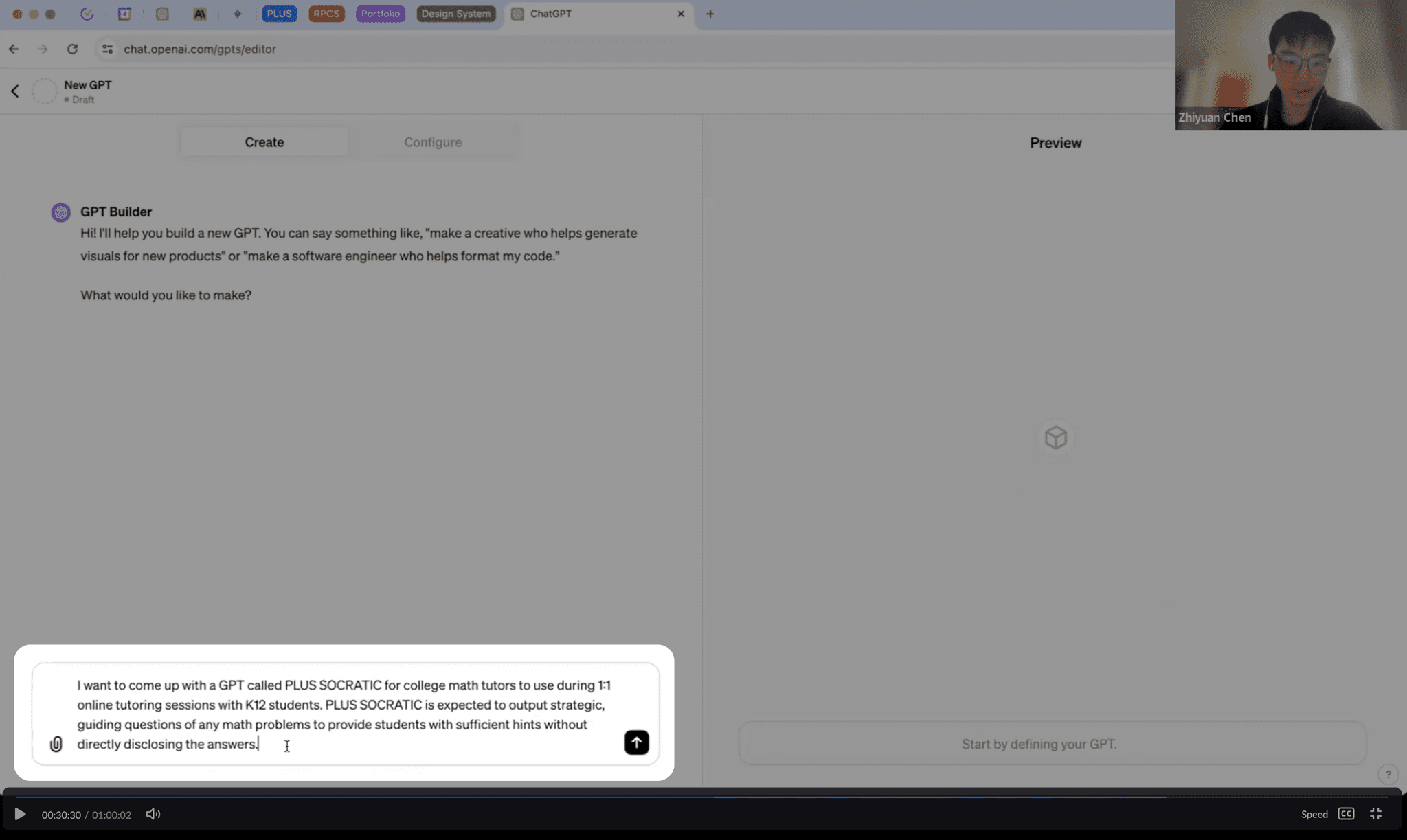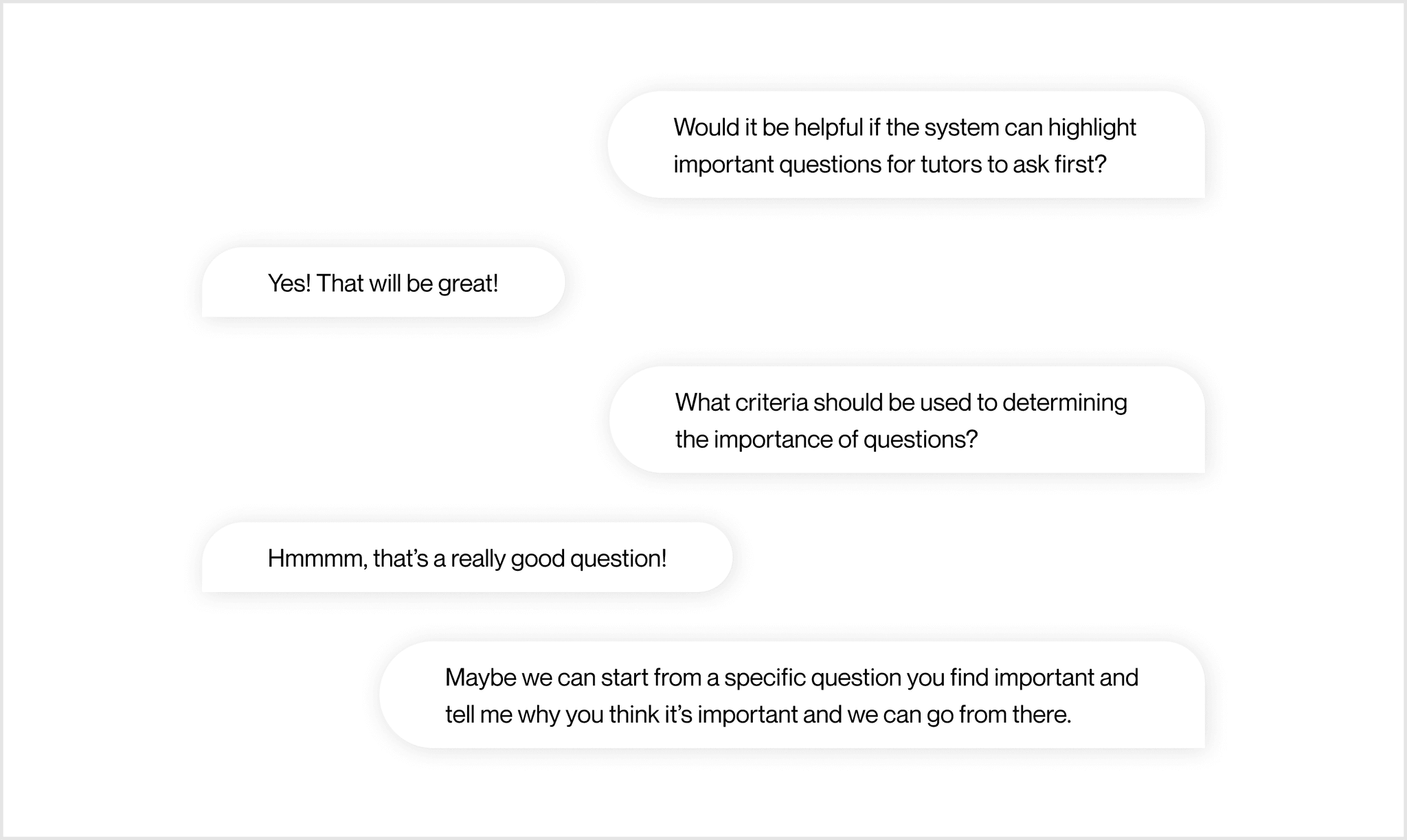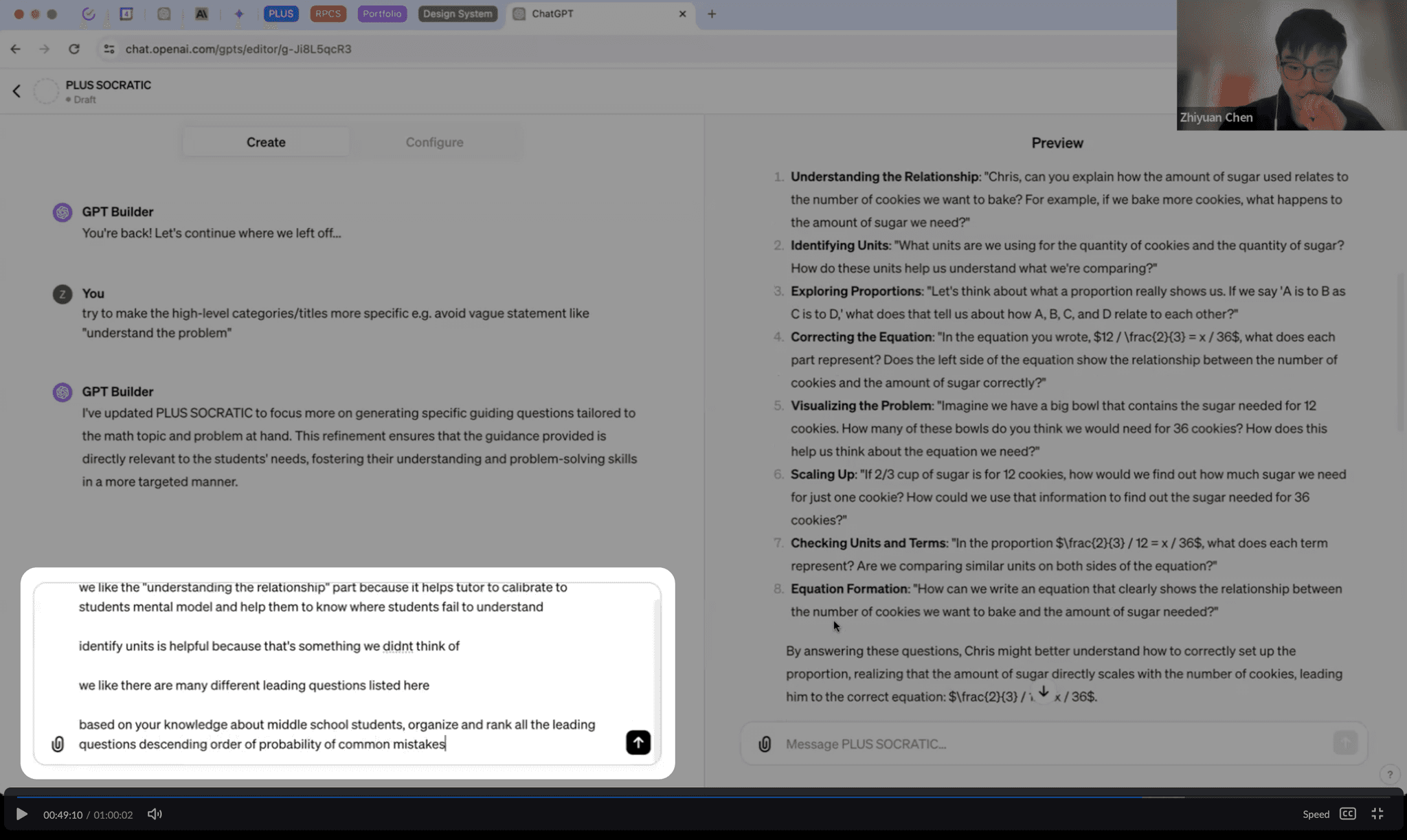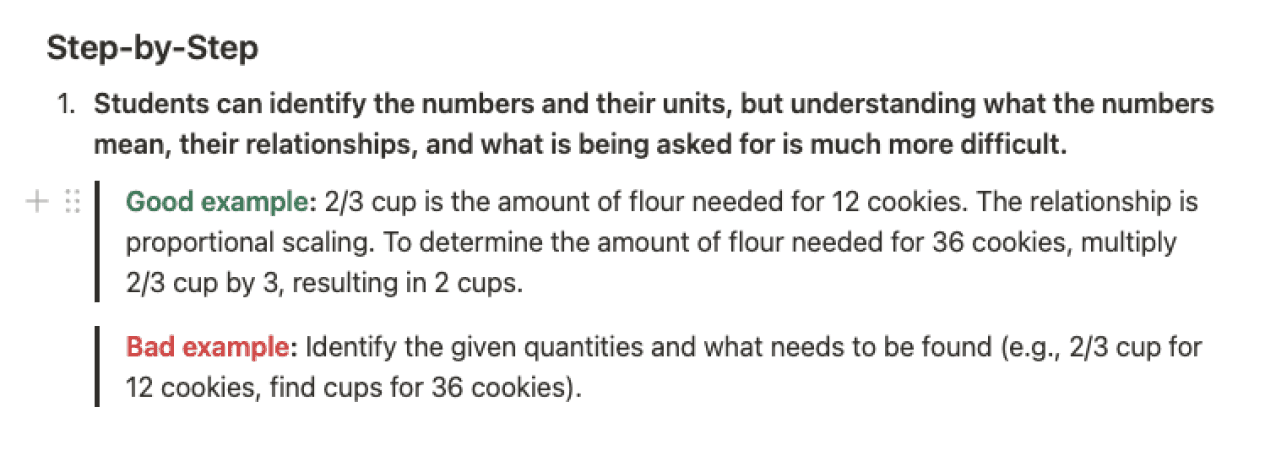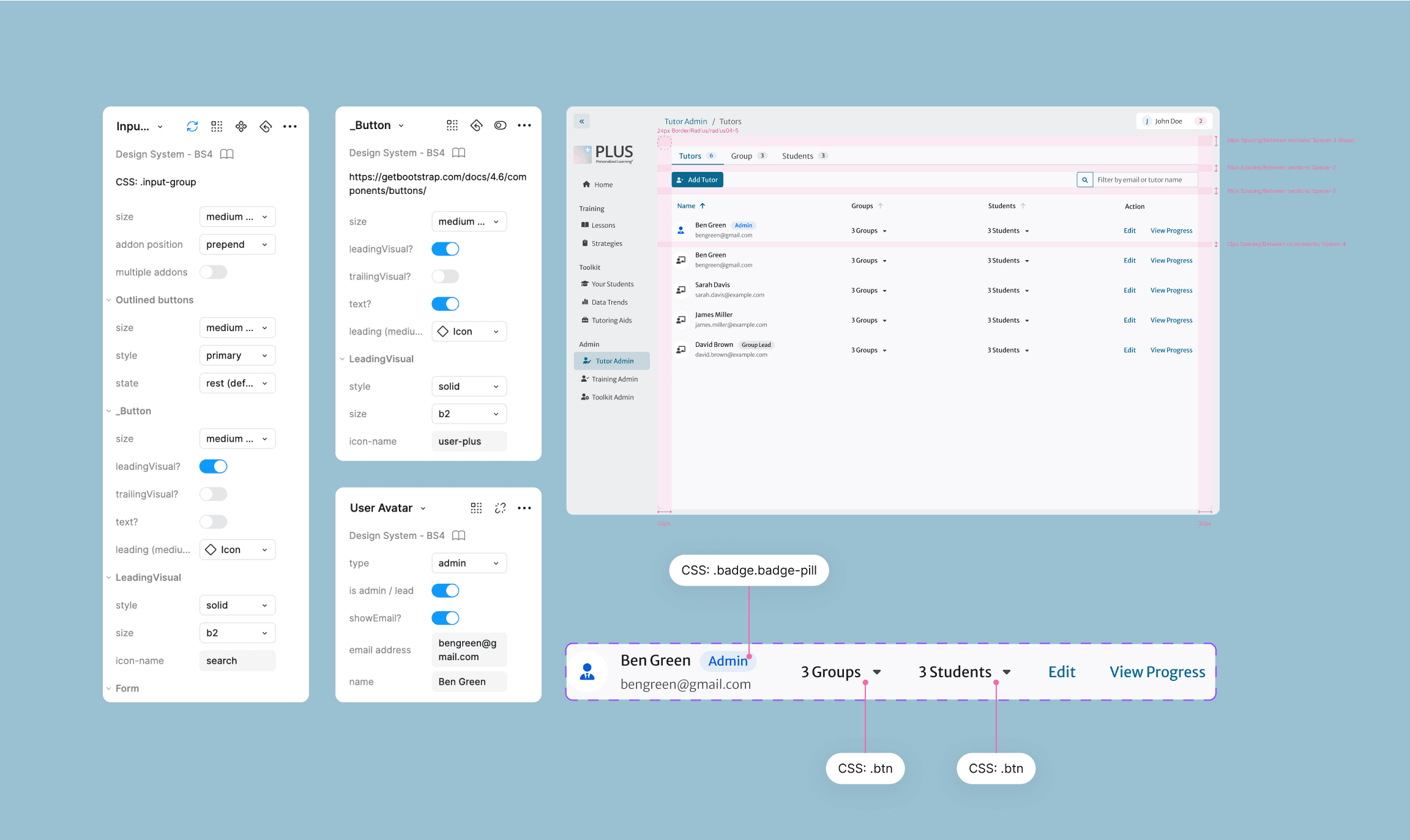Project Info
001
6 months
Role
Lead Product Designer
Team
Zhiyuan Chen (Lead Product Designer)
Tina Chen (Product Designer)
Shivang Gupta (Head of Product)
Bill Guo (Product Manager)
Zach Levonian (ML Engineer)
Responsibility
Led the design effort from scratch to implementation, through user research, synthesis, conceptualization, prioritization, rapid prototyping, wireframing, interaction design and testing.
Company Info
002
Who is PLUS?
Led by Carnegie Mellon University and Stanford University, PLUS is a tutoring platform that combines human and AI tutoring to bridge opportunity gaps in math education.
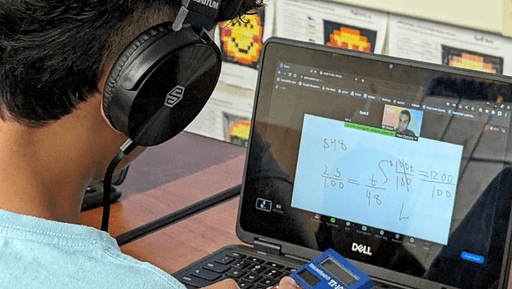


3000 +
Middle School Students
500 +
Math Tutors
3000 +
Tutoring Hours Per Week
Case Summary
003
Problem: In a race against time, tutors struggle to make math stick and engage students
Tutors at PLUS conduct 30-minute sessions with about 5 students, giving them only 6 minutes per student on average. At the same time, they often struggle to explain math concepts clearly and efficiently, or to keep students engaged. In this race against time, tutors must maximize both clarity and engagement to ensure each student grasps the material and feel more motivated.
Requirement: Embracing the trend of AI
Following the wave of Al, the Head of Product wants us to design an LLM-powered solution to help tutors with this issue.
Solution: Empowering tutors with a co-pilot
We developed an LLM-powered co-pilot to assist tutors clearly explain math problems, provide effective encouragement, and ask strategic leading questions, ensuring they make the most of their limited time with each student to enhance engagement and learning outcomes.
Impact: Improving session efficiency
300 +
MAU
20%
decrease in time spent explaining math concepts
38%
increase in student engagement
End Results
004
Users can review the steps first and adjust the number of steps if they feel too detailed or too brief
User can expand each step to view the encouragement and leading questions
Detailed Process
Research
001
Leading the effort to identify user pain points
12 Video Analysis
Understand session structure
Observe tutor and student behaviors and interaction patterns
Identify challenges and frictions
2 Focus Group Interviews
Understand tutors' pain points, including when they occur, their frequency, and severity
Understand how they manage challenges and the support available to tutors
After synthesizing the result into a user journey map, I decided to focus on the in-session phase because the inadequate existing support and the numerous pain points highlight a significant opportunity for intervention.
Mapping user pain points and the level of existing support onto various phases
Ideation
002
From 0 to 200: A wild exploration with AI-driven brainstorming
To quickly generate a wide range of creative ideas, I decided to leverage AI-driven brainstorming.
After going through 3 iterations in prompt engineering where I simultaneously evaluate input and output to find the most effective prompt that lead to most reliable ideas, I successfully generated over 200 ideas within just 1 hour.
Synthesis
003
From 200 to 2: Identifying a deliverable MVP
After several rounds of initial filtering, we trimmed our potential ideas from 200 to 10. I then used multi-method approaches to seek input from different stakeholders to further narrow down ideas and eventually landed on 2 solutions that are high-impact and low-effort.
➡️ Solution I
A step-by-step guide to math problems for tutors to provide explanations effeciently
➡️ Solution II
Strategic leading questions for tutors to ask students instead of offering answers directly
Rapid Prototyping
004
Co-create solutions for effective and desirable LLM output
Although the design direction is clear, we were unsure what kind of content output would be most helpful and meet tutors' needs. To develop a tool that's useful for them, we conducted 5 participatory design sessions, inviting tutors to build the co-pilot together.
Design Decisions
005
Model Iterations
006
Transform SME feedback into clear action steps for ML engineer
To continuously enhance model output, I conducted two rounds of feedback collection from tutor supervisors. I synthesized this feedback into concrete and actionable steps for developers to iterate on.
Initial feedback, unstructured and wordy
Synthesized feedback, contextual, actionable and with examples
Reflection
007
If I had a chance to redo the project, I would…
Under the same constraints, I would revisit ideas tutors found highly relevant but not desirable, as this indicates we identified the right problems but didn’t propose the best solutions, leaving room for improvement.
If there were no constraints, I would…
I would explore additional AI use cases and focus on matchmaking how AI could effectively address tutors' needs, including those beyond the in-session phase of tutoring. While some opportunities were initially excluded as out of scope after research, there may be valuable roles for AI as a supportive tool that were previously overlooked.
I would consider integrating additional functionalities into the tool, as there were a few ideas closely ranked behind the two we eventually pursued, which could still provide significant value if implemented.
The next step is …
The next step involves gathering data and identifying opportunities to enhance existing features or introduce new ones. I would continue soliciting user feedback on model performance and work with ML engineers to iterate and improve. I would fly on the wall to observe tutors using the tool in real time, identifying anything that requires optimization. Lastly, I would revisit solutions initially excluded from the MVP and consider integrating them to expand functionality.

